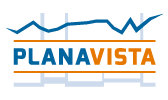Planavista Consulting: Visualize your Schedule!
Planavista Consulting specializes in the visualization of schedules for infrastructure construction sites (Linear Scheduling) in road construction, track construction, tunneling, pipeline, metro and tram construction, dike construction, canal and harbor structures. The visualization of the special features, conditions and characteristics of a schedule provides valuable insights for the project management and control and enables effective communication even of complicated and lengthy projects to all involved stakeholders.
We have many years of experience in the use, consultation and training of the project planning systems commonly used in construction (Especially Tilos, TurboChart, Phasemanager, Asta powerproject, Microsoft project, Oracle Primavera P6)
We are happy to assist you in the visualization of your schedules. We design and create new schedules or revise existing ones. We also import your data from existing other schedules – and visualize your project (Our Services)
The special feature in visualization of schedules for infrastructure projects (also called linear construction sites):
Linear scheduling Infrastructure construction projects:
At these sites, work types, components and activities are spread over a distance or area at different locations.
Characteristic are repetitive activities in different locations. Overlaps in one place at the same time has to be avoided. On the other hand a timewise, technically and cost-optimized sequence is to be created. In addition, other planning dimensions must be considered:
Some of many questions:
How can I communicate my extensive and detailed schedule so that it can be captured quickly and easily?
How is the work interlinked in different lots, structures and different contractors?
How track posessions can be used for construction work, runs and transports?
Access Restrictions: How and when do we perform work in places where we have limited access?
What materials, equipment and teams are needed when and where?
Can materials be delivered in time to the appropriate locations or removed from there?
Hass haulage: How can I optimize the routes and number of devices in terms of cost and operation?
Is accesses to the construction locations given? What structures have to be completed when – to ensure the overall process?
How are construction activities coordinated in different locations?
Which dependencies exist between different construction locations / buildings / lots?
What costs arise in terms of time and how can these be presented?
How do I plan my construction site logistics: Site access, equipment and material supply, mass haulage
What effect do plan changes and shifts in one location have on other locations?
How can I develop and compare different schedule scenarios?
How can I compare planned performance and actual performance?
Special Presentation of the Schedule
To plan all these many details, and above all – to communicate to the plan receiver – special representations of the schedule is required. The usual representation of schedules in the columnn based bar chart (Gantt chart) is not enough, because the local conditions can not be represented. Thus the understanding of the schedule remains insufficient. The project schedule of infrastructure construction sites requires special presentations:
Presentation of Schedules for Infrastructure construction projects:
Two kind of presentations are used in practice:
Linear Schedule / Time-Location-Diagram
The Linear Schedule / Time-Location-Chart introduces a path axis and a site plan in addition to the time axis. Now activities are additionally displayed at their location, in their direction and working speed. On one hand, this representation enables to recognize and avoid activity overlaps (working in the same place, at the same time). On the other hand, it allows time/schedule optimizations of successive work sequences and the coordination of work at different locations. The Linear Schedule shows both, the optimal sequence of operations in the same place, but also which operations take place at the same time in other places. Conflicts become visible through overlapping lines and surfaces
The construction phase map
The Phase map shows colored areas and locations on a site plan. Different colors correspond to different activities and the colored shapes are related to a date or period too. This enables to identify all the tasks that are planned or executed at different locations at one time/period.
The choice of the displayed time period defines a phase – and from successive phases, small “flipbook” movies can be generated, animating the construction process.
Project lifecycle for linear scheduling and phase maps
It has been shown that these graphical representations can be meaningfully used in different forms throughout the entire project lifecycle. For the most part they serve communication: e.g. of the feasibility, scenario analysis, project tender, procurement schedule, execution plans with target / actual comparisons, faults in the construction process and presentation of the effects.












